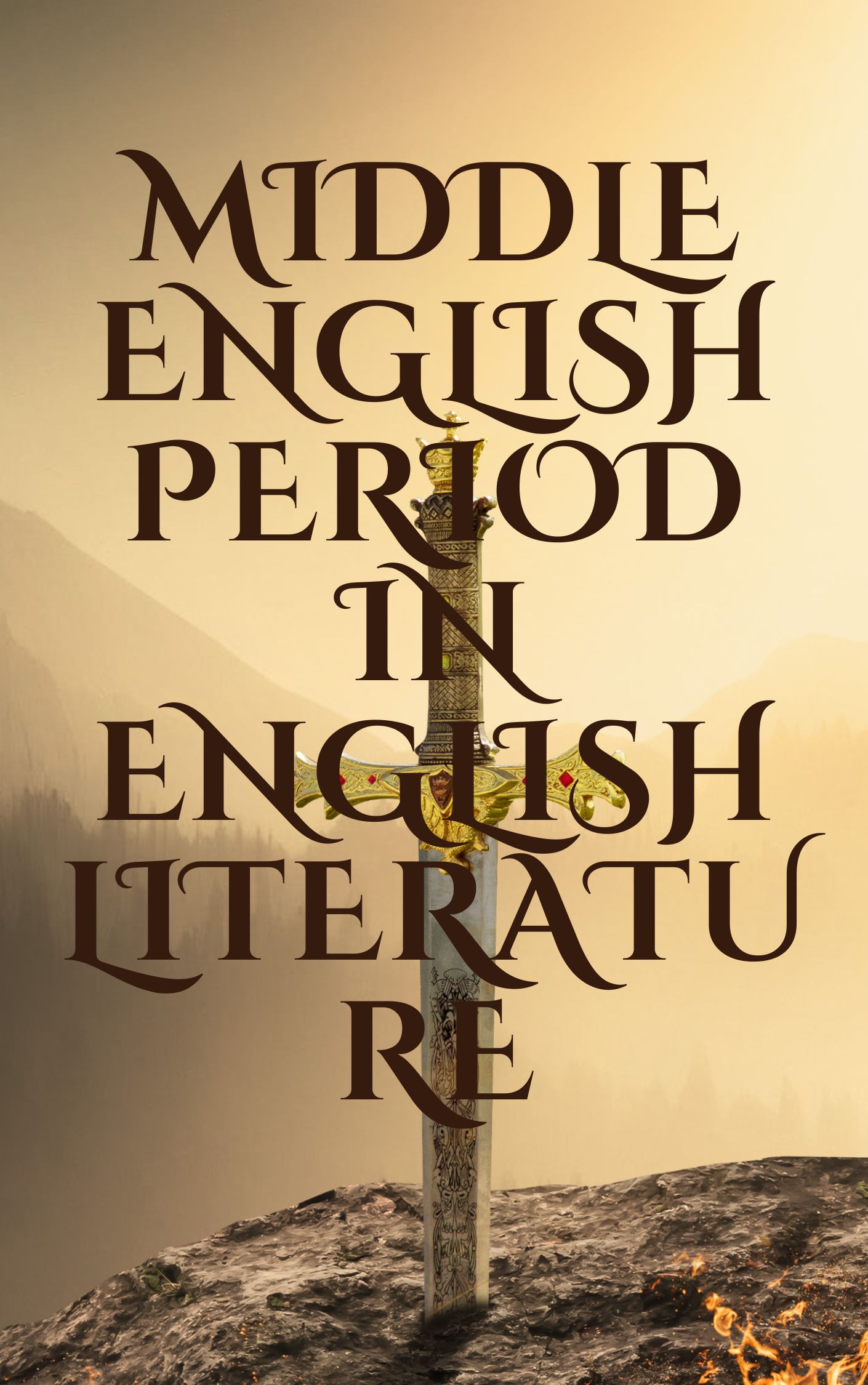A Journey Through Time: The Middle English Period in English Literature
Introduction
The Middle English period, spanning roughly from the late 11th to the late 15th century, marks a pivotal era in the evolution of the English language and literature. This period witnessed profound linguistic shifts, the rise of vernacular literature, and the emergence of some of the most celebrated works in English literary history.
The Middle English period, spanning roughly from the late 11th to the late 15th centuries, constitutes a pivotal juncture in the evolution of the English language and its literary expression. This era witnessed a profound transformation, marked by significant linguistic shifts, the rise of vernacular literature, and the emergence of some of the most enduring works in English literary history.
The Norman Conquest of 1066, a watershed moment in English history, ushered in a period of dramatic linguistic change. While Old English, the language of the Anglo-Saxons, continued to be spoken by the common people, the arrival of the Norman French brought with it a new language of power and prestige. French became the dominant language of the court, administration, and higher social circles, exerting a profound influence on English vocabulary, grammar, and pronunciation. This intricate interplay between the two languages resulted in the gradual emergence of Middle English, a unique blend that would ultimately shape the English language as we know it today.
The middle english period also witnessed a remarkable flourishing of literature. While religious texts continued to hold significant importance, with works like Ancrene Wisse and The Owl and the Nightingale providing spiritual guidance and moral instruction, a new wave of literary creativity emerged. Romance, with its tales of chivalry, courtly love, and adventurous exploits, captivated audiences across the social spectrum.
The Middle English period saw the rise of vernacular literature, with English gradually reclaiming its place as a literary language. This shift away from the dominance of Latin and French marked a significant step towards the development of a distinct English literary tradition.
This introduction provides a concise overview of the key features of the Middle English period, highlighting the profound linguistic shifts, the rise of vernacular literature, and the emergence of a rich and diverse literary landscape.
Linguistic Transformations
The Norman Conquest of 1066 ushered in a period of significant linguistic change. While Old English remained the language of the common people, French became the language of the elite, influencing vocabulary, grammar, and pronunciation. This linguistic interplay gave birth to Middle English, a blend of Old English and Norman French.
A Flourishing of Literature
The Middle English period saw a remarkable flourishing of literature. Religious texts, such as Ancrene Wisse and The Owl and the Nightingale, offered spiritual guidance and moral instruction. Romance, a popular genre, captivated audiences with tales of chivalry, courtly love, and adventure.
The Rise of Chaucer
No discussion of Middle English literature is complete without mentioning Geoffrey Chaucer, arguably the most influential figure of the period. His Canterbury Tales, a collection of stories told by pilgrims on a journey to Canterbury, offers a vibrant tapestry of medieval life, showcasing the diversity of English society and language.
Geoffrey Chaucer, often hailed as the “father of English literature,” stands as a towering figure in the Middle English period. His emergence as a literary luminary was a pivotal moment, solidifying the position of English as a significant literary language and paving the way for future generations of English writers.
Chaucer’s unique contribution lies in his masterful use of the English language. He embraced the evolving vernacular, capturing the nuances of everyday speech with unparalleled wit and sophistication. His works, particularly The Canterbury Tales, showcased the diversity of English society, from the nobility to the common folk, with a keen eye for social observation and a remarkable ability to capture the human condition with both humor and poignancy.
Chaucer’s influence extended beyond his literary achievements. His writings played a crucial role in standardizing the English language, establishing a model for future writers to emulate. His innovative use of rhyme and meter, drawing inspiration from continental traditions, enriched the possibilities of English poetry.
Furthermore, Chaucer’s works transcended the boundaries of his own time. The Canterbury Tales, with its engaging narrative framework and diverse collection of stories, continues to captivate readers centuries later. His characters, from the worldly Wife of Bath to the pious Parson, remain enduring archetypes of human nature.
In conclusion, Geoffrey Chaucer’s rise to prominence represents a turning point in English literary history. His masterful use of the English language, his insightful social commentary, and his enduring literary legacy cemented his position as a cornerstone of English literature and a profound influence on generations of writers to come.
Other Notable Works
- Sir Gawain and the Green Knight: An anonymous masterpiece of alliterative verse, this poem explores themes of chivalry, courtly love, and the supernatural.
- Pearl: A moving elegy on the death of a young girl, this poem is renowned for its intricate symbolism and lyrical beauty.
- Everyman: A morality play that explores the themes of sin, death, and redemption, Everyman remains a powerful and enduring work of literature.
The Legacy of Middle English
The Middle English period laid the foundation for the development of modern English literature. The linguistic innovations and literary achievements of this era continue to inspire and influence writers and readers today.
The Middle English period, spanning roughly from the late 11th to the late 15th centuries, left an indelible mark on the trajectory of English literature. Its legacy extends far beyond the specific works produced during this era, shaping the very foundation upon which subsequent literary movements would be built.
Firstly, the period witnessed a crucial shift in the status of the English language. While initially overshadowed by Norman French, English gradually reclaimed its ground, evolving into a vibrant and flexible literary medium. This resurgence of English as a vehicle for artistic expression laid the groundwork for the blossoming of English literature in the centuries to come.
Secondly, the Middle English period fostered a rich tapestry of literary forms. From the soaring heights of romance and the profound introspection of religious texts to the social commentary and vibrant storytelling of Chaucer, this era witnessed the emergence of diverse and innovative literary expressions. These diverse forms not only entertained and informed but also provided valuable models for future generations of writers.
Thirdly, the Middle English period fostered a sense of national identity. As English literature began to flourish, it increasingly reflected the unique experiences and perspectives of the English people. This growing sense of national identity, expressed through literature, would continue to evolve and inform the nation’s cultural and literary landscape for centuries to come.
Finally, the Middle English period bequeathed to posterity a rich literary heritage. The works of Chaucer, Sir Gawain and the Green Knight, Pearl, and Everyman, among others, continue to captivate and inspire readers today. These enduring masterpieces serve as a testament to the enduring power of language and the enduring human condition, reminding us of the timeless qualities that resonate across generations.
In conclusion, the legacy of the Middle English period is multifaceted and profound. It laid the foundation for the development of modern English literature, fostered a rich diversity of literary forms, contributed to the growth of national identity, and bequeathed to posterity a timeless literary heritage. The echoes of this era can still be heard in the vibrant tapestry of English literature today.
Conclusion
The Middle English period was a time of remarkable creativity and transformation. From the linguistic shifts brought about by the Norman Conquest to the emergence of Chaucer and other literary giants, this era played a crucial role in shaping the English language and literature as we know it.
The Middle English period, while brimming with literary and linguistic innovation, gradually transitioned into the Early Modern English period. This shift was marked by several key developments.
Firstly, the advent of the printing press revolutionized the dissemination of knowledge and literature. William Caxton’s introduction of the printing press to England in 1476 had a profound impact, facilitating the mass production of books and making literature more accessible to a wider audience. This technological advancement significantly contributed to the standardization of the English language and the emergence of a more unified literary culture.
Secondly, the Black Death, a devastating pandemic that swept across Europe in the mid-14th century, had a profound social and cultural impact. The significant loss of life disrupted the social order and led to social and economic upheaval. These societal changes were reflected in the literature of the period, with themes of mortality, social unrest, and the fragility of human existence becoming more prominent.
Thirdly, the rise of humanism and the Renaissance in Europe began to exert a growing influence on English thought and culture. The emphasis on classical learning, individual expression, and a renewed interest in the human experience began to shape the intellectual and artistic landscape of England, paving the way for the literary and cultural flourishing of the Renaissance period.
In conclusion, the end of the Middle English period was marked by a confluence of factors, including the rise of the printing press, the social and cultural impact of the Black Death, and the growing influence of Renaissance humanism. These factors contributed to significant shifts in the linguistic, social, and cultural landscape of England, laying the groundwork for the vibrant literary and cultural developments of the Early Modern English period.

